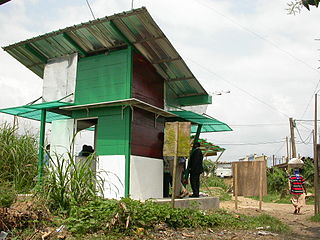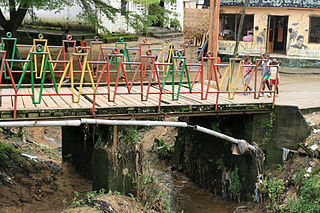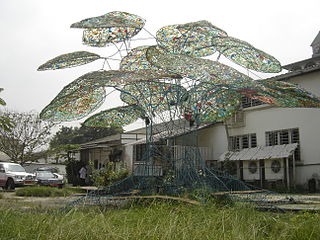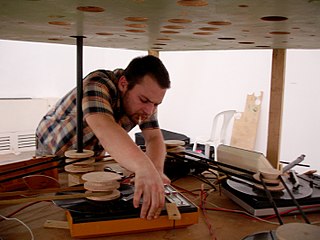This article includes a list of references, related reading or external links, but its sources remain unclear because it lacks inline citations .(January 2018) (Learn how and when to remove this template message) |
| Face à l'eau | |
|---|---|
 | |
| Artist | Salifou Lindou |
| Year | 2008-2010 |
| Type | Sculpture |
| Dimensions | 3.70 m(146 in) |
| Location | Bonamouti-Deido, Douala, Cameroon |
| 4°04′02″N9°44′16″E / 4.0672°N 9.7378°E Coordinates: 4°04′02″N9°44′16″E / 4.0672°N 9.7378°E | |
| Owner | Municipality of Douala |
Face à l’eau is a public artwork made by the artist Salifou Lindou between 2008 and 2010. It is made of five panels, each 3.70 metres (12.1 ft) high, in wood, metal, and colored plastic sheets on the banks of the river Wouri in Bonamouti, Douala, Cameroon.
Salifou Lindou is a self-taught artist who lives and works in Douala.

The Wouri is a river in Cameroon. Cameroon has two major rivers, the Sanaga, the longest with about 525 km long and the Wouri, the largest. The Wouri forms at the confluence of the rivers Nkam and Makombé, 32 km (20 mi) northeast of the city of Yabassi. It then flows about 160 km (99 mi) southeast to the Wouri estuary at Douala, the chief port and industrial city in the southwestern part of Cameroon on the Gulf of Guinea. The river is navigable about 64 km (40 mi) upriver from Douala.
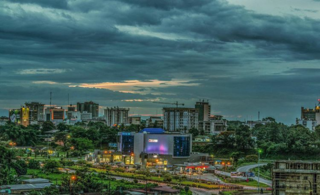
Douala is the largest city in Cameroon and its economic capital. It is also the capital of Cameroon's Littoral Region. Home to Central Africa's largest port and its major international airport, Douala International Airport (DLA), it is the commercial and economic capital of Cameroon and the entire CEMAC region comprising Gabon, Congo, Chad, Equatorial Guinea, Central African Republic and Cameroon. Consequently, it handles most of the country's major exports, such as oil, cocoa and coffee, timber, metals and fruits. As from 2018, the city and its surrounding area had an estimated population of 1,338,082. The city sits on the estuary of Wouri River and its climate is tropical.













